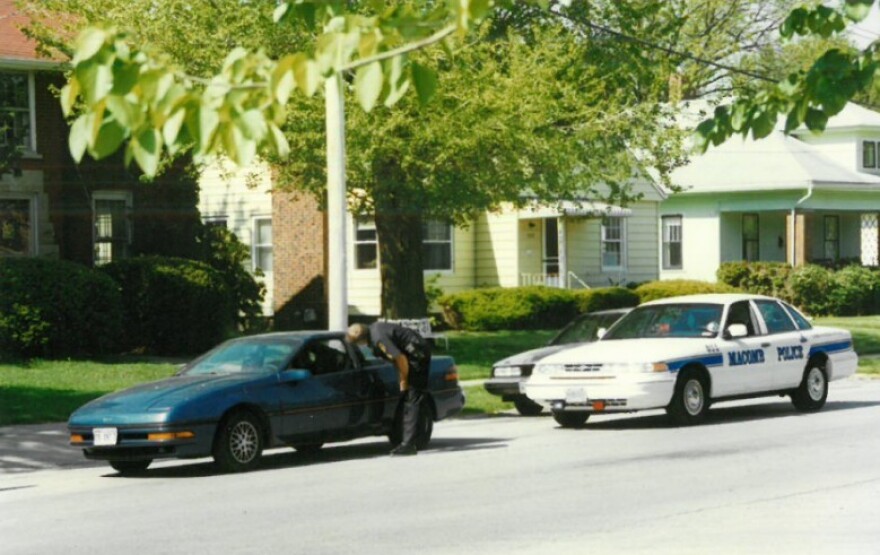Like with so many other things, the technology for police squad cars has advanced by leaps and bounds.
“The technology in here allows officers to do so much more than we were 25 years ago,” said Macomb Police Chief Jeff Hamer while showing one of the squad cars to TSPR. We asked to take a look after the city council recently approved the purchase of two new vehicles for the police department.
Hamer said dashboard cameras were new when he joined the department in 2001. He said they were big and bulky, and even blocked a bit of an officer’s view through the windshield.
“Now what we have are HD cameras, and they’re much smaller. In fact, the one in here is smaller than a smartphone, about half the size,” he said. “And then the hard drive is all the way wired into the trunk, so none of that equipment is kind of blocking your view.”
While dashboard cameras were new in 2001, the use of body cameras was still a few years off. Now, those cameras are synchronized through Bluetooth.
“So when we activate our emergency lights to pull over a car, not only does it turn on the dashboard camera, but it also turns on our body cameras,” Hamer said. “So that’s less buttons for the officer to press or forget to press, and so it kind of makes a more consistent recording environment.”
Hamer said that also helps the officer focus on the vehicle they’re pulling over and the people in it instead of worrying about activating their body cam.
The chief said officers today use military grade laptops in the field with faster speeds and better processing than equipment at the turn of the century. Officers can easily take the laptops out of the car and carry them right to a crime scene to take notes, photos, and video.
In addition, today’s squad cars have articulated mounts for the laptops, allowing them to be adjusted according to each officer’s height and preference.
Changes in squad cars extend beyond the driver area. Hamer said the back seats of squad cars are designed differently now too.
“Now what we have is a kind of a crafted prisoner compartment that’s made specifically for prisoner transport,” he said. “You see a plexiglass shield as opposed to heavy gauge metal. That’s lighter. There’s still some steel cage back here, but these are like modular systems and they’re a lot easier to get in and out of the police cars.”
Hamer said some of the vehicles have seat belts that attach to the door side of the rear cabin. This means officers don’t have to reach across a person’s face or chest to get them buckled in. This helps officers avoid possible hazards.
“Especially if they were a little bit combative or if they had airborne illnesses and things like that. We’re thinking of safety on all fronts,” Hamer said.
The vehicles look different from the outside, too.

In the late 1990s, Macomb police drove the streets in white, four-door sedans with blue lettering.
Now, they drive black and white sport utility vehicles with black and gold lettering.
“So, SUVs sit higher up in traffic. We’re able to see more. SUVs are popular. The price has come down on them over time. Not only can we see more, but it also holds the equipment a little bit better, and a little more room for the officers and anybody else riding in the vehicle,” Hamer said.
He said SUVs are the vehicle of choice for most police departments, though some rural departments opt for pickup trucks.
The Macomb department has 10 marked squad cars and another half dozen cars that are unmarked or for other uses, such as for DARE officers. They rotate out two cars every year.
Each car costs about $55,000 to buy and equip. Hamer said equipment such as cameras and laptops can get reused.
The chief said today’s squad cars handle better and include more safety features than when he joined the department, and the technology keeps improving.
“A lot of the technology has just been evolving to smaller, more rugged, longer lasting,” Hamer said.
Tri States Public Radio produced this story. TSPR relies on financial support from our readers and listeners in order to provide coverage of the issues that matter to west central Illinois, southeast Iowa, and northeast Missouri. As someone who values the content created by TSPR's news department, please consider making a financial contribution.



